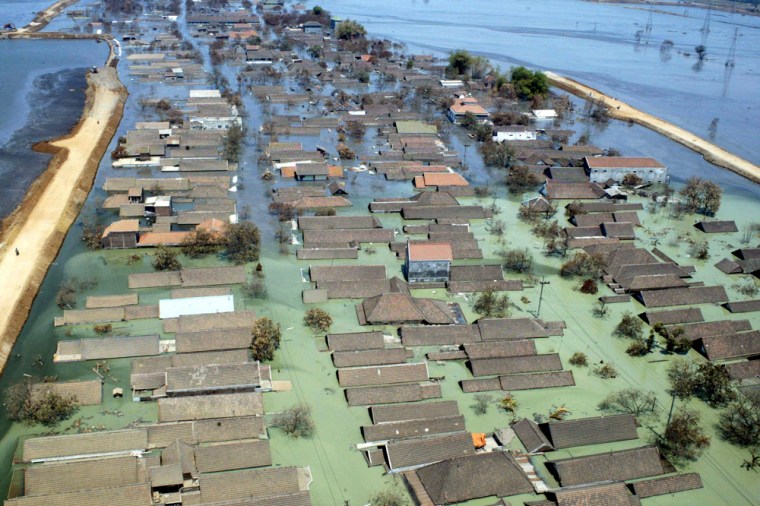Indonesia will resettle more than 3,000 families whose houses have been swamped by mud surging from a gas exploration site and will dump the sludge into the sea to avoid more destruction, the government said Wednesday.
The mud appeared four months ago after an accident occurred deep in a drilling shaft on the seismically charged island of Java. It now covers more than 665 acres and is currently being contained by an ever-expanding network of dams that are breached almost daily.
Public Works Minister Djoko Kirmanto said efforts would continue to cap the so-called mud volcano, which has been streaming from the ground at a rate of 1.7 million cubic feet a day.
In the meantime, the mud will be dumped in the sea and more than 3,000 families would be resettled on the orders of the president because the land “was no longer fit for human habitation,” he said.
The environment minister, who had earlier threatened to block efforts to dispose of the mud in the sea on grounds it might kill the fish, said the mud was not toxic and that he now supported the plan.
Criminal charges expected
Police have said they intend to file criminal charges against nine employees from the gas exploration company Lapindo Brantas, alleging its drilling activities caused the torrent and that its response was inadequate.

The company argues seismic activity might have caused the mud to break the surface.
Basuki Hadi Muljono, the head of a government team dealing with the disaster, said resettling the families and disposing of the mud would cost at least $162 million.
The costs would be born by Lapindo, not the government, he said.
Experts say the mud volcano is one of the largest ever recorded on land. The mud is believed to come from a reservoir more than 3 1/2 miles underground that has been pressurized by tectonic activity or by the accumulation of hydrocarbon gases.
The company is trying to stem the flow by pumping in concrete, but geologists fear it is unstoppable. They say the mud could stop on its own anytime — or keep flowing for years to come.
Mud dumped at office
Earlier Wednesday, protesters dumped a truckload of the mud outside the offices of Welfare Ministry Aburizal Bakrie to demand he do more to help the some 10,000 displaced people. Bakrie’s family owns Lapindo.
“This is out of control and not enough is being done to stop it,” said Emmy Hafild, executive director of Greenpeace Southeast Asia, the environmental group that held the protest. “Bakrie should not run away from his responsibilities.”
Police did not try to stop the protesters from pouring about 1,540 pounds of mud on the sidewalk outside the ministry. Some of the demonstrators carried a banner saying “Stop your mud Mr. Bakrie or your mud will stop you!”
Bakrie, one of Indonesia’s wealthiest businessmen, has been quoted as saying the mud flow was not his responsibility.
